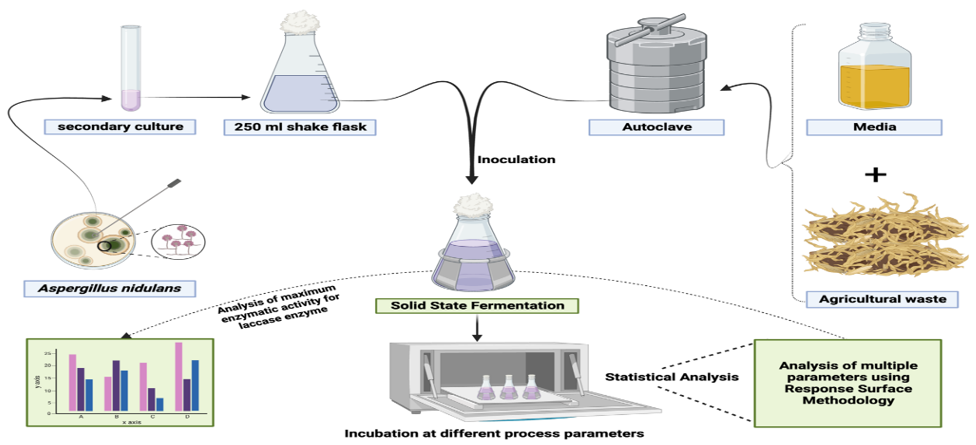Optimization of process parameters using response surface methodology (RSM) for laccase enzyme production using Aspergillus nidulans in solid state fermentation utilizing agro-industrial waste

DOI:
https://doi.org/10.62110/sciencein.jist.2024.v12.777Keywords:
Solid state fermentation, agriculture waste, laccase enzyme, lignocellulosic, response surface methodologyAbstract
The utilization of microbial laccase for the biological delignification of biomass is regarded as an environmentally sustainable procedure. The present study aimed to optimize the process parameters in order to achieve improved laccase production. Mustard oil cake was utilized as a solid substrate, and Aspergillus nidulans was employed as the fungal strain. The present study investigated the impact of different physical and chemical factors on laccase production, specifically focusing on moisture content, incubation time, nutrient pH, incubation temperature, salt concentration, and additional carbon and nitrogen sources. Additionally, response surface methodology was employed to optimize both the media and process parameters. The highest observed laccase activity was around 6.99 U/ml. The best conditions for the manufacture of laccases were determined through observation. It was found that a moisture content of 100% (w/v), an incubation temperature of 28°C, a pH range of 5-6, and the addition of 6% MgSO4 (w/v) and ammonium chloride as supplementary salts in the production medium resulted in the highest production of laccases. The production medium was incubated for a duration of 96 hours.
URN:NBN:sciencein.jist.2024.v12.777
Downloads
Downloads
Published
Issue
Section
URN
License
Copyright (c) 2023 Ashutosh Khaswal, Santosh Kumar Mishra, Neha Chaturvedi, Prabir Kumar Paul, Ravi Kant Singh, Arpita Roy, Chetan Pandit, Vaseem Raja, Devvret Verma

This work is licensed under a Creative Commons Attribution-NonCommercial-NoDerivatives 4.0 International License.
Rights and Permission







